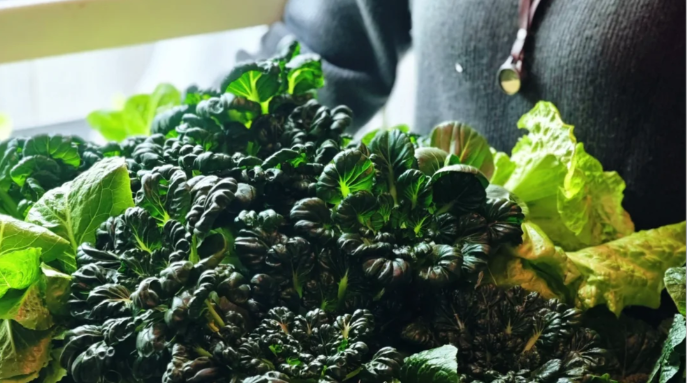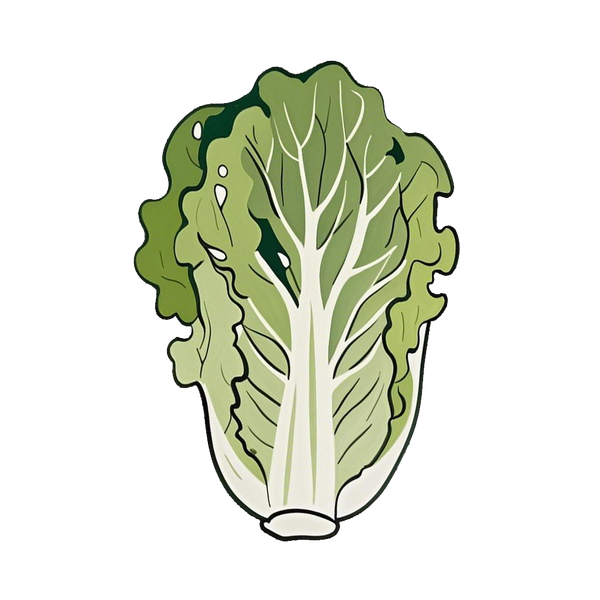
Embark on a Hydroponic Vegetable Journey at Home: A Simple and Fun Growing Guide
In fast-paced urban life, people's pursuit of fresh, healthy ingredients never stops. Imagine having a vibrant "green garden" on your balcony, windowsill, or even a kitchen corner – without needing a large plot of land. This is no longer an unattainable dream; hydroponic vegetable cultivation makes it a reality.
Today, let's explore the wonderful world of hydroponic vegetables and learn how you can easily experience this fun growing method at home.
I. Types of Vegetables Suitable for Hydroponics
Under typical urban climate conditions, the following vegetables are particularly suitable for hydroponics. They grow quickly and are relatively easy to manage.
Lettuce: Essential for salads or sandwiches, hydroponic lettuce grows rapidly. Its optimal growth temperature is between 15–25°C (59–77°F), making it especially suitable for winter and spring. Loose-leaf varieties yield the best results in hydroponics.
Mint: Widely used in urban cuisine (e.g., mint tea, mint yogurt sauce), mint thrives in warm environments. With sufficient light and clean water in a hydroponic setup, it flourishes, adding unique flavor to your table.
Basil: Often used to add rich aroma to sauces and dishes. With a properly prepared nutrient solution, basil grows well hydroponically, allowing you to pick fresh leaves anytime.
Spinach: Nutrient-rich spinach is an excellent choice for a healthy diet. When growing hydroponically, use an appropriately concentrated nutrient solution and adjust concentration as the plant grows. Choose varieties with good disease resistance and strong bolting resistance.
Water Spinach (Kangkong): Highly heat-tolerant, it's suitable for hot urban climates. For hydroponics, select mature stems. Cut the bottom at an angle, retaining 2-3 buds. Lower buds are for rooting, while upper buds stay above the water surface to grow new leaves. Change the water every 3-4 days for easy management.

II. Building a Simple Hydroponic System
Materials Preparation
Container: Common household items like plastic buckets, old fish tanks, or transparent plastic boxes work well. A cleaned, large yogurt bucket is an eco-friendly and practical choice. Ensure the container is non-toxic, leak-proof, and deep enough for root growth.
Planting Baskets or Net Pots: Use specialized plastic hydroponic baskets or substitute with common metal strainer baskets. Line the bottom with sponge or coconut coir to hold seedlings and allow roots to contact the nutrient solution.
Nutrient Solution: Various commercial hydroponic nutrient solutions are available; dilute according to instructions. For DIY options, common kitchen items like gypsum powder (calcium source), crushed eggshells (calcium), and banana peels (potassium) can be used. Pay close attention to proportions; experimentation may be needed.
Air Pump and Air Stone (Optional): For larger setups, adding oxygen to the water helps roots breathe. Prepare a small air pump and air stone.
Construction Steps:
1. Thoroughly clean the container. Pour in diluted nutrient solution to about 2/3 of the container's depth.2. Place the planting basket on top. Carefully position seedlings in the basket, securing roots with sponge or coir to ensure good contact with the solution.
3. (Optional) Place the air stone in the nutrient solution, connect it to the air pump, and turn it on to create bubbles and increase oxygen.
4. Place the system in a bright location (e.g., balcony corner, windowsill) but avoid direct, intense sunlight. Provide shade during midday in hot weather to prevent high water temperatures from damaging roots.

III. Introduction to Intelligent Hydroponic Systems
Intelligent hydroponic systems use advanced technology for precise environmental control, making management easy even for busy urbanites. They are becoming increasingly popular in modern city homes.
System Components
1. Smart Grow Box: Typically made of eco-friendly plastic, featuring multi-layer designs to maximize space in compact urban homes. Built-in sensors monitor data, and it offers automatic temperature and humidity control.
2. Automatic Nutrient Solution Circulation System: Automatically prepares and delivers nutrient solution tailored to different plant growth stages, ensuring optimal nutrient absorption.
3. LED Grow Lights: Compensate for insufficient or unstable natural light indoors. They simulate sunlight spectra to promote photosynthesis, are energy-efficient, and environmentally friendly.
4. Mobile App Control System: Monitor system parameters (temperature, humidity, nutrient concentration) remotely via an app. Control light cycles, nutrient circulation times, etc., even while traveling or busy at work.
Advantages
Saves Time & Effort: The system automates most tasks. You mainly need periodic checks, plus adding water and nutrients occasionally. Ideal for fast-paced urban lifestyles.
Precise Environmental Control: Accurately adjusts temperature, humidity, light, and nutrients to create the optimal growing environment, leading to higher yields and better quality.
Aesthetic & Space-Saving: Compact, stylish design resembles elegant home decor. Fits well in living rooms, balconies, or kitchens. Efficiently utilizes vertical space, minimizing footprint.
IV. Daily Management Tips
Regular Inspection: Check plants regularly in both simple and smart systems. Look for yellowing/wilting leaves or unhealthy roots. Address issues promptly (e.g., yellow leaves may indicate insufficient nutrients or light; adjust accordingly).
Replacing Nutrient Solution: In simple systems, replace the solution every 1-2 weeks to ensure nutrient availability and clean water. Do a complete change at regular intervals.
Cleaning Debris: Promptly remove dead leaves and debris from the container to prevent rot, which harms water quality and plant health.
Adjusting Light & Temperature: Adapt to seasons and weather. Avoid prolonged direct sun exposure in summer (use shade cloth or move indoors). In winter, extend LED light duration if natural light is insufficient.
Now you've mastered the methods for home hydroponic vegetable cultivation! Whether you choose a simple DIY system or a high-tech smart setup, you can enjoy the fun of growing and harvest fresh, healthy veggies right at home. Take action now and create your own green hydroponic garden!
✅Our home hydroponic system belongs to everyone, and we help you achieve your dream of home hydroponic planting. For more information, please visit our website vvccculturate.com, where we will provide you with a complete set of hydroponic system

